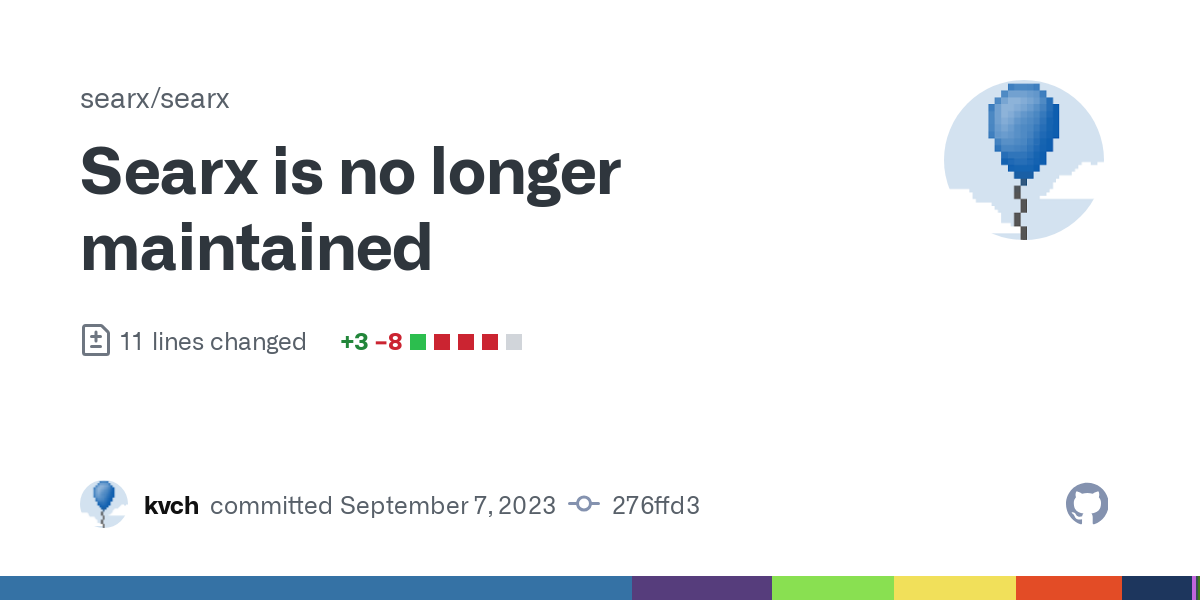podman-compose is packaged in a separate podman-compose package in Debian 12 (did not try it though). The only thing missing (for me) in Debian 12 is quadlets support (requires podman 4.x, Debian 12 has 3.x)
- 1 Post
- 29 Comments

 1·5 days ago
1·5 days agoI use tt-rss and the android app

 2·16 days ago
2·16 days agohttps://www.sphinx-doc.org/ + https://pradyunsg.me/furo/ theme + https://myst-parser.readthedocs.io/ markdown parser + https://sphinx-design.readthedocs.io/ extensions.
Just drop all your markdown files in a directory and run
sphinx-build. Highly customizable but also works out of the box

 2·16 days ago
2·16 days agoYou just have to find the channel_id buried in the page source
I use this Firefox addon for that: https://addons.mozilla.org/en-US/firefox/addon/youtube-rss-finder/ - really useful
I wrote this ansible role to setup dovecot IMAP server. Once a year I move all mail from the previous year from various mailboxes to my dovecot server (using thunderbird).

 7·27 days ago
7·27 days agoInteresting post, but what does this have to do with selfhosting? This is not /c/llm

 6·2 months ago
6·2 months ago- How should I do backups? - Lemmy.World
- What backup service do you use? - Lemmy.world
- What are your backup solutions? - Lemmy.world
- How do you guys back up your server? - Lemmy.world
- How do you backup things to your server? - Lemmy.world
- How to store backups? - Lemmy.world
- How do you backup your data? - Lemmy.world
- Need help with a backup solution - Lemmy.World

 1·2 months ago
1·2 months agoI do this with https://www.sphinx-doc.org/ + a basic Makefile and config file to make it a bit nicer. I will publish my template a bit later and report back.
I wrote this ansible role to setup dovecot IMAP server. Once a year I move all mail from the previous year from various mailboxes to my dovecot server (using thunderbird).

 1·4 months ago
1·4 months agoI use the Netdata agent (with cloud features disabled). Easy installation, FOSS, 0 configuration required, tons of metrics.

 3·4 months ago
3·4 months agoI wrote my own ansible role to deploy/maintain a matrix server and a few goodies (element/synapse-admin). If you’re not using ansible you should still be able to understand the deployment logic by starting at
tasks/main.ymland following includes/tasks from there.

 9·4 months ago
9·4 months agohost maps
It does require a beefy server (rendering tiles is CPU/RAM-intensive, storing pre-rendered tiles is expensive on storage) It should be doable on limited hardware if only a small area.
I think the better move would be keeping/distributing a local copy of the OsmAnd android APK and a few maps for the app. Because you’ll not be able to provide map access to people from your server if the Internet/local fiber/phone network is down - this way everyone can have their own full copy of the map.
I’m not sure about the method to extract map data from the app storage directory though.

 2·4 months ago
2·4 months agoJust download a copy of a recent wikipedia dump. You can open it in the Kiwix desktop application (work fine even on an old laptop), the android app (though I’ve never tried opening a full 100GB dump with a phone, not sure if it would work well), or install the
kiwix-toolpackage and serve the.zimfile withkiwix-serve(https://wiki.kiwix.org/wiki/Kiwix-serve). You’d also probably want a reverse proxy/usual basic web server/security setup around that.

 13·4 months ago
13·4 months agoSecond this, always have a device preloaded with Kiwix and one of the wikipedia dumps. A new vesrion is uploaded every few (~6 months). The full English wikipedia dump with images (low-res versions only though) is only 103GB.

 2·4 months ago
2·4 months agolibvirt/virt-manager is a nice VM management tool.
Their cheap 1-6€/month VPS offers are actually fine. Not much to say about it, it just works.
https://awesome-selfhosted.net/ is hosted on a Ionos VPS.

Podman
podman-generate-systemdpodmananddockercommand-line are 100% compatible for my use cases